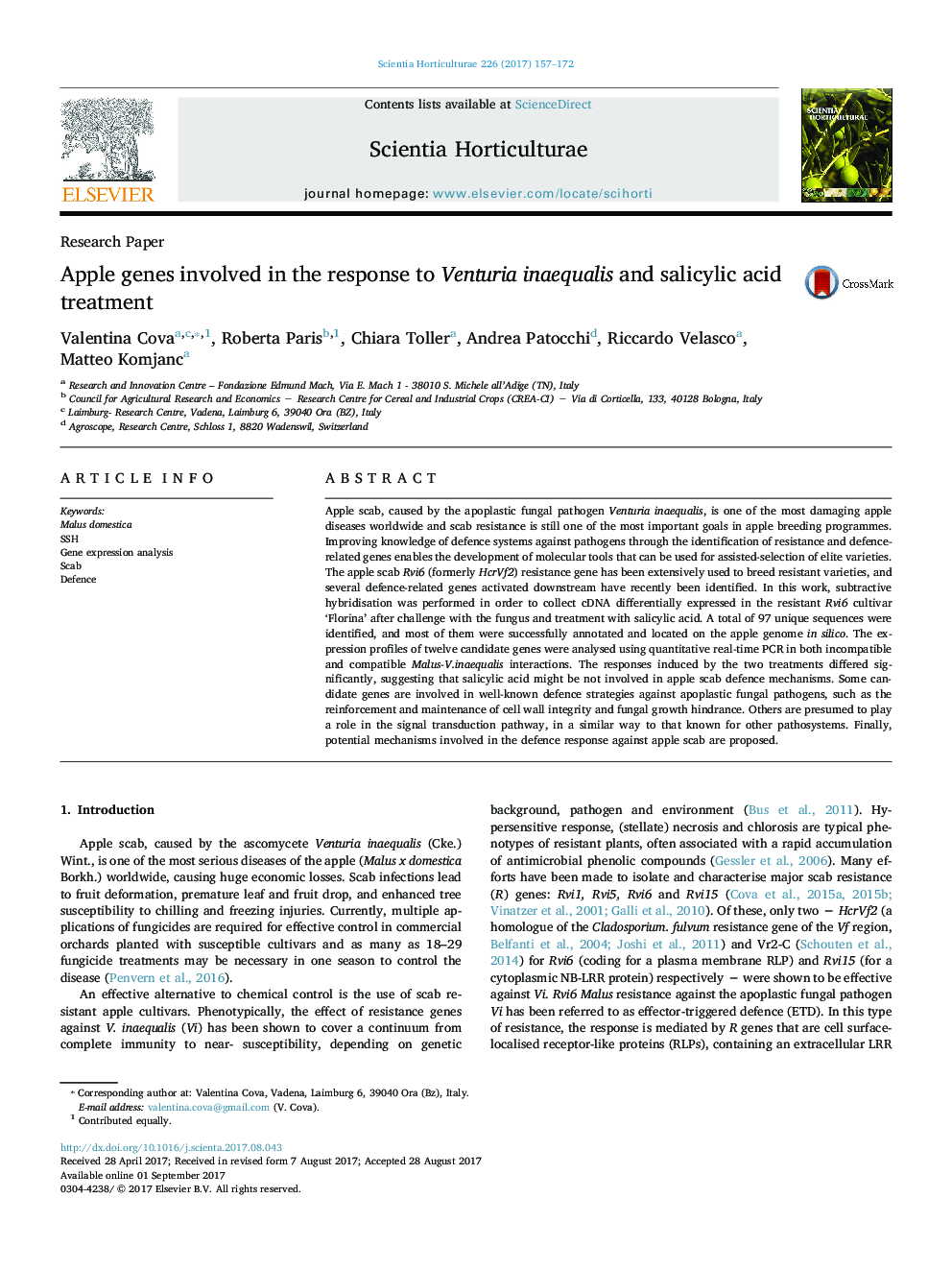| کد مقاله | کد نشریه | سال انتشار | مقاله انگلیسی | نسخه تمام متن |
|---|---|---|---|---|
| 5769356 | 1628772 | 2017 | 16 صفحه PDF | دانلود رایگان |

- Apple scab is one of the most severe apple disease caused by the ascomycete V. inaequalis.
- 97 unique sequences were identified by SSH, putatively involved in apple defence.
- The expression profile of 12 candidate genes was analysed in response to fungus and SA.
- These genes might represent the basis for speed up the selection process for resistant genotypes.
- Responses induced by pathogen and by SA treatment were significantly different.
Apple scab, caused by the apoplastic fungal pathogen Venturia inaequalis, is one of the most damaging apple diseases worldwide and scab resistance is still one of the most important goals in apple breeding programmes. Improving knowledge of defence systems against pathogens through the identification of resistance and defence-related genes enables the development of molecular tools that can be used for assisted-selection of elite varieties. The apple scab Rvi6 (formerly HcrVf2) resistance gene has been extensively used to breed resistant varieties, and several defence-related genes activated downstream have recently been identified. In this work, subtractive hybridisation was performed in order to collect cDNA differentially expressed in the resistant Rvi6 cultivar 'Florina' after challenge with the fungus and treatment with salicylic acid. A total of 97 unique sequences were identified, and most of them were successfully annotated and located on the apple genome in silico. The expression profiles of twelve candidate genes were analysed using quantitative real-time PCR in both incompatible and compatible Malus-V.inaequalis interactions. The responses induced by the two treatments differed significantly, suggesting that salicylic acid might be not involved in apple scab defence mechanisms. Some candidate genes are involved in well-known defence strategies against apoplastic fungal pathogens, such as the reinforcement and maintenance of cell wall integrity and fungal growth hindrance. Others are presumed to play a role in the signal transduction pathway, in a similar way to that known for other pathosystems. Finally, potential mechanisms involved in the defence response against apple scab are proposed.
Journal: Scientia Horticulturae - Volume 226, 19 December 2017, Pages 157-172